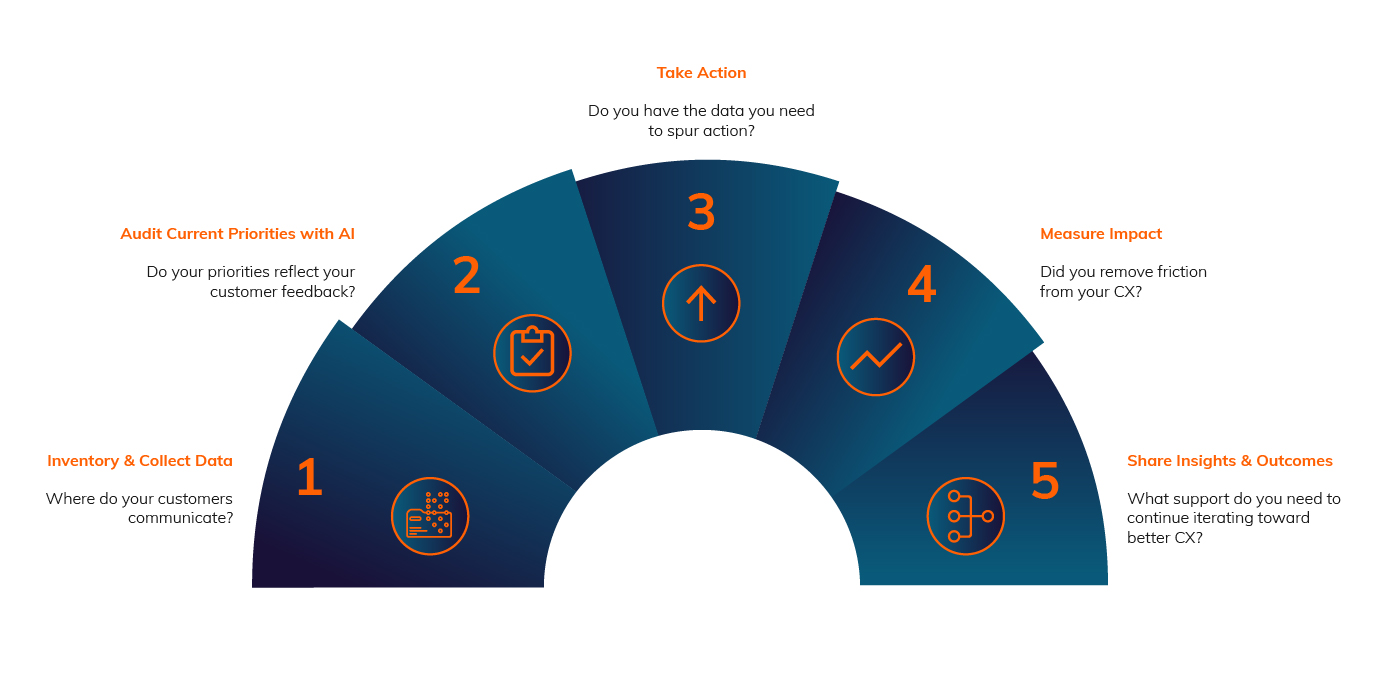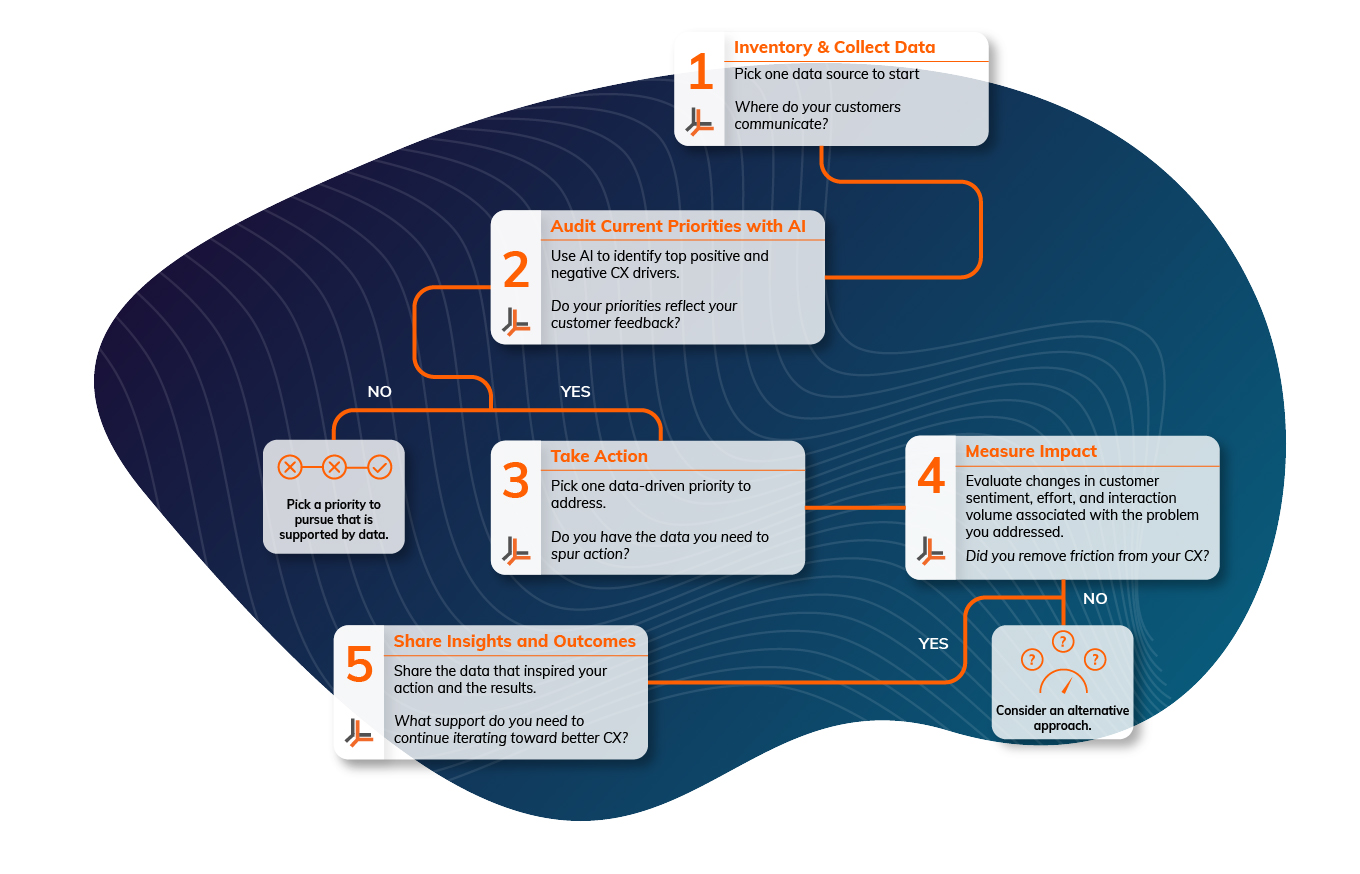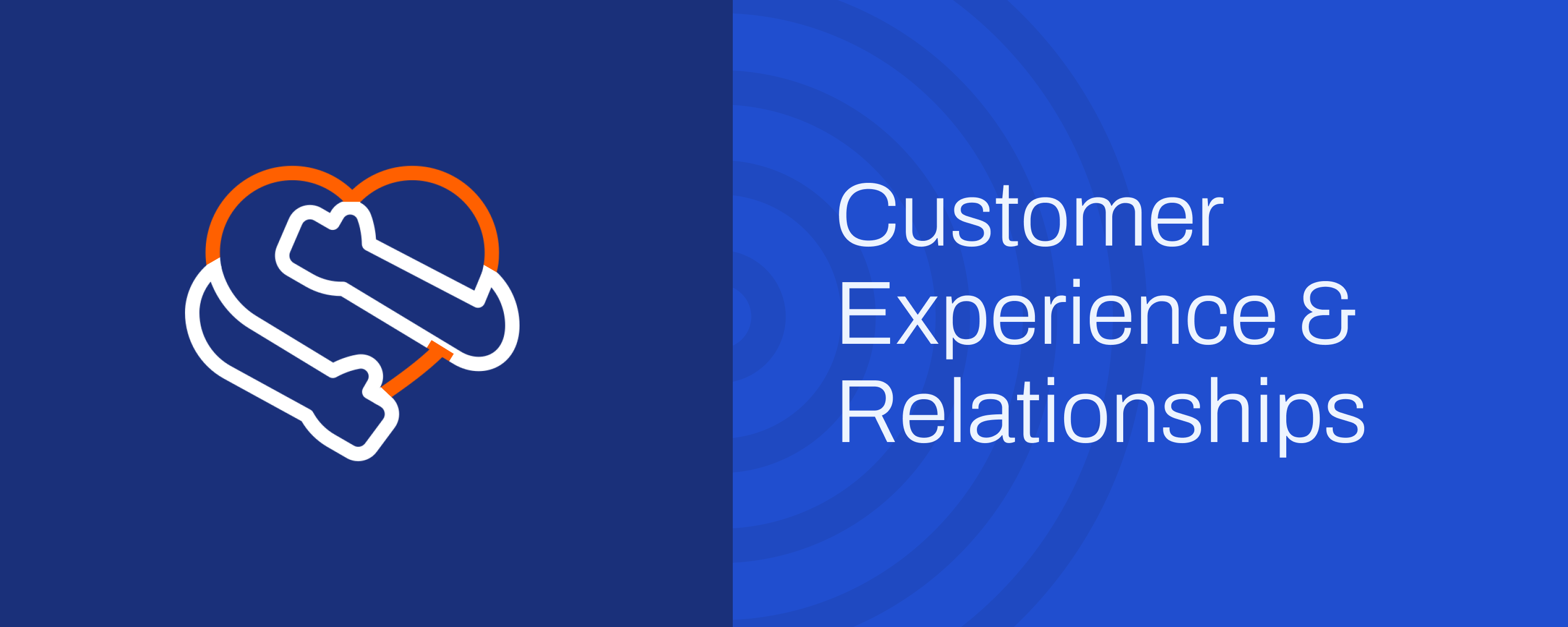Too often, when organizations think about getting started with a traditional CX program, things generally go one of two ways:
You sign a contract with a reliable legacy survey platform. About six months and six figures later, you still don’t have any actionable insights. The frustration of your implementation team is palpable, and cross-functional stakeholders are weary from having the same conversation week after week.
Or, you assemble a task-force responsible for uncovering insight from your customer feedback. But high data volume, multiple sources of feedback and insufficient tooling keep the team’s focus on data gathering and analysis instead of action. As a result, nothing ever seems to change. By the time you’re ready to make decisions and implement changes, they’re too little, too late.
Either of those situations sound familiar?
Using customer feedback to improve customer experience doesn’t have to be painful. You don’t need to manufacture customer feedback, and you don’t need to rely on manual effort to gather and analyze data.
Leaders at companies with best-in-class CX are looking to another approach —Customer Experience Ops — to drive company-wide action from customer feedback.
CX Ops Focuses on Continuous Improvement
CX Ops is an action-oriented practice that unifies customer feedback and measures every interaction from every channel to help CX teams turn insight into action.
Focusing on continuous improvement significantly lowers traditional barriers to getting started. Rather than adding a new feedback channel with its own implementation headaches, CX Ops means seeking insight from the channels your customers are already using. Rather than convincing a cross-functional committee to invest significant internal resources in sweeping, hypothesis-driven changes, CX Ops means building on small, data-driven steps that are easy to measure in the short and long term.
Continuously measuring and improving CX produces better results faster than traditional methods and is more easily tailorable to your organization’s individual needs. Starting with small steps, you can make measurable, meaningful improvements to your CX and build a foundation of metrics validated by operational results. As you continuously improve your CX, you can see how changes, small and large, affect your KPIs, your goals, and of course, your customer relationships.
Five Steps To Get Started With CX Ops
Part of building a CX Ops strategy is a simple decision to hold your CX teams to a standard of continuous, measurable improvement based on listening to customers. The rest is setting up an environment where those iterated efforts can succeed. Here are five steps that can be scaled to your team and timeboxed to reach escape velocity quickly:

1. Inventory & Collect Data
The majority of your customer feedback is organic and comes from the channels where customers already communicate with you. Deloitte says that the average enterprise has 28 different customer data sources. It’s important to work toward unifying all of your customer-facing channels so that you can measure CX holistically. However, it doesn’t have to all be done at once. Start by cataloging broadly — knowing every communication channel, when and how often is used, and by whom, will let you make future decisions confidently.
Then, prioritize narrowly. Your business model will significantly influence which channels matter most to you and where to start. For SaaS companies, your customer feedback is likely to be heavily concentrated in support tickets. For B2C brands, social channels may be a rich data source. Consider each of your customer segments, or personas, and where you typically hear from whom.
Data gathering is typically one of the most time-consuming steps of a traditional CX program. CX Ops enables you to gather data rapidly because you’re focusing on channels you already have. As long as you’re monitoring the channels that matter most to your business, you can rest assured that your CX Ops strategy is grounded in high-quality data that is highly representative of your customer experience.
The best CX Ops solution will allow you to unify the channels you’ve chosen to start with and connect them to AI in a matter of minutes.
2. Audit Current Priorities With AI
Manually analyzing customer feedback is a scaling disaster. By contrast, CX Ops leverages today’s natural language understanding to bring unprecedented clarity, depth, and automation to your CX data management. Once you’ve connected data to an AI analysis tool, channels that were once purely transactional become your best listening posts for rich insight.
Automatically labeling interactions by sentiment and topic can power an audit of your current priorities. Does data support your current focal areas the way you expected? Are there more pressing issues that merit resources right now? If you’re starting with a support channel, an easy way to frame the audit is to look at the top drivers of negative and positive sentiment, or of the overall team effort, across your support tickets. Purpose-built AI can surface correlations between topics you didn’t know to ask about and operational metrics that drive your costs and customer experience quality.
Manual effort saddles traditional CX programs with information overload that results in analysis paralysis. Used effectively, AI can assist the digestion of high-volume data into simple patterns so that you can easily find the insight you need and can focus on taking action.
3. Take Action
Did the AI-driven audit of your current priorities support your current focus? Maybe your team has been raising the same issue to Product for years but has never been able to get a solution prioritized. The AI analysis should equip you with hard data and customer verbatims that support your focus and accelerate resolution.
Did the audit reveal that something else is more urgent and more important? If you’re just getting started, you may want to prioritize an issue that requires a small improvement that you can execute within the scope of your remit. For example, Support leaders could make minor tweaks to help docs language that has proven confusing or reconsider ticket prioritization frameworks to reduce resolution times.
Once you’ve amassed some small wins, you can graduate to more substantial CX improvements that may require more coordination. Perhaps you can eliminate a frustrating step from your billing process or successfully prioritize that integration topping your customers’ wish lists. Getting other stakeholders on board should be much easier once you have shared some data on the impact of what you’ve already done (see steps 4 and 5).
Direct, digestible insights in a normalized format that other teams can understand empowers you tomobilize cross-functional stakeholders. Cross-functional stalemates have killed many traditional CX programs — AI-mined customer feedback insights make a far greater impact than anecdotes and one-off fire drills and meet far less skepticism and red tape.
CX Ops solves the data quality challenges that have hampered traditional CX programs. Instead of relying on sparse anecdotes, CX Ops enables you to assemble a bulletproof business case in minimal time. With a unified customer feedback hub, you can identify not only how many customers an issue affects but how much revenue it represents, and whether it’s urgent, important, or both, and the consequences of inaction.
Use this insight to reduce the distance between insight and action and watch your team’s productivity and contribution to CX soar.
4. Measure Impact
Were your actions effective? Here’s where you identify the impact of the data-driven decisions you’ve made and the resulting actions. The most successful organizations will take every opportunity to learn and iterate.
Well-executed CX Ops continually measures the impact of actions across multiple timescales.
- On a daily and weekly basis, you can build an understanding of the way incidents, feature releases, and other events are impacting the customer experience.
- On a weekly or monthly basis, you should be able to measure a reduction in repeat issues that you are addressing.
- On a quarterly basis, you should see better NPS, account-level sentiment, and retention.
Continuous measurement can power Intelligent KPIs for your CX — for example, a 20% increase in satisfaction or decrease in complaints about an issue you addressed.All of the above will translate to less churn, stronger customer relationships, and a valid claim to industry-leading CX. If you have the right tooling in place, it should be straightforward to track short, medium, and long term outcomes across a set of customers from the time you addressed any given issue.
The measurement step represents one of the most salient differentiators between traditional CX programs and CX Ops. Too many companies leave their CX quality to bets, both large and small, and cannot measure their actions’ efficacy. A focus on data-driven priorities sourced from high-quality, unified data with rapid feedback loops eliminates uncertainty and execution risk and leads to the most impactful CX improvements.
5. Share Insights & Outcomes
Since your customer relationships impact everyone’s success, every team in your organization is a CX stakeholder. Whether you’re just getting started or are well-versed in CX Ops, it’s essential to share the impact of your CX initiatives with the whole organization.
Traditional CX programs can perpetuate siloes and cross-functional misalignment — if sparse survey results are the extent of cross-functional data sharing, you cannot expect to rally enthusiasm for taking bigger and bolder steps toward a better CX. Some organizations have Slack channels where they share NPS statistics with their whole teams, which can help increase visibility. Additionally, while meetings can help create empathy, individual teams are still likely to prioritize their own goals after the fact, and failing to coordinate is a costly mistake. Increasing visibility with meetings and internal tooling is great, but aligning around shared priorities is better.
The best CX Ops solution will enable you to easily create and share custom reports to meet any individual or team objective. Not only does this help every team align priorities around CX, but it inspires active participation across all teams. Reliable data reduces the risk of taking action, and the ability to measure what’s working and what’s not right away further minimizes barriers to getting started.
Imagine a CX leadership meeting where everyone has reviewed the same data-driven insights and is excited to move forward with a next step for continuously improving your CX — this is the reality you’re creating in this step.
The steps of a well-executed CX Ops strategy are fundamentally cyclical, and each round of completion across the five steps generates continuous improvements to your CX. Once you’ve reached the last step for the first time, you can repeat the cycle better, faster, and with greater impact. Are there additional data sources you should consider unifying with what’s currently in scope? What is the next CX driver you can prioritize?
Getting Started With CX Ops Can Be Simple
Getting started with CX Ops doesn’t need to be painful. No matter what you’ve already tried, it’s never too late to reset your process. Improving customer experience should be as dynamic a process as the customer feedback that defines it. CX Ops is an incremental, always-on practice focused on continuously scaling what works and minimizing the impact of what doesn’t.
Below are some incremental approaches you can start with across each step without an enormous lift or the need to secure multiple layers of buy-in.

Talk to usto learn more about how Frame AI’s engine for CX Ops can help you deliver industry-leading CX.


